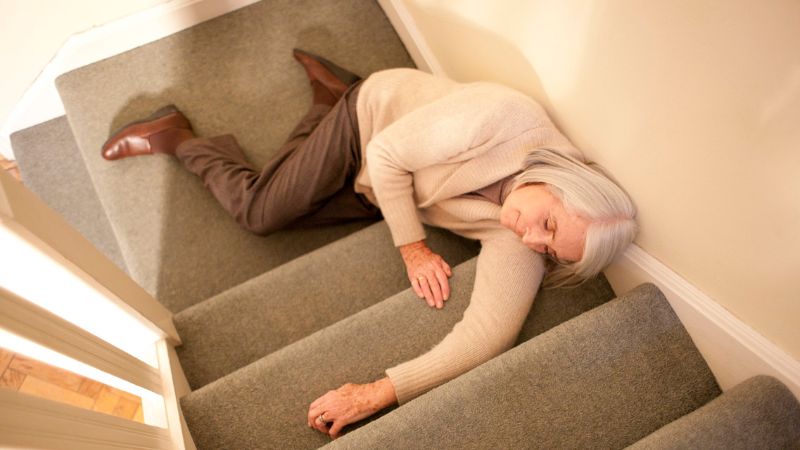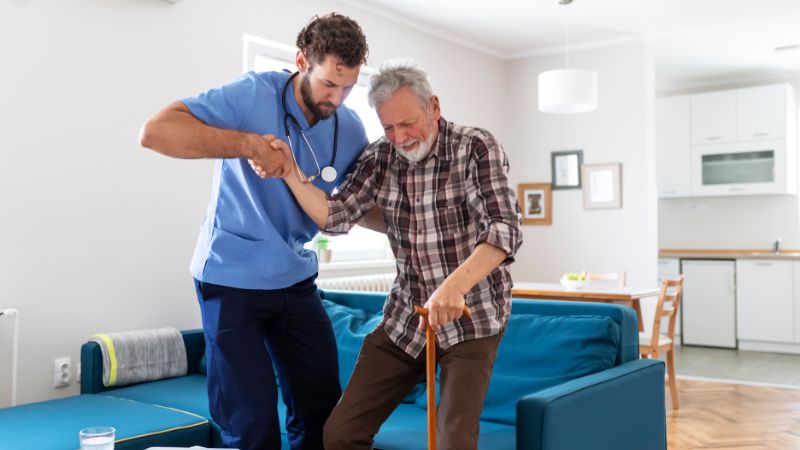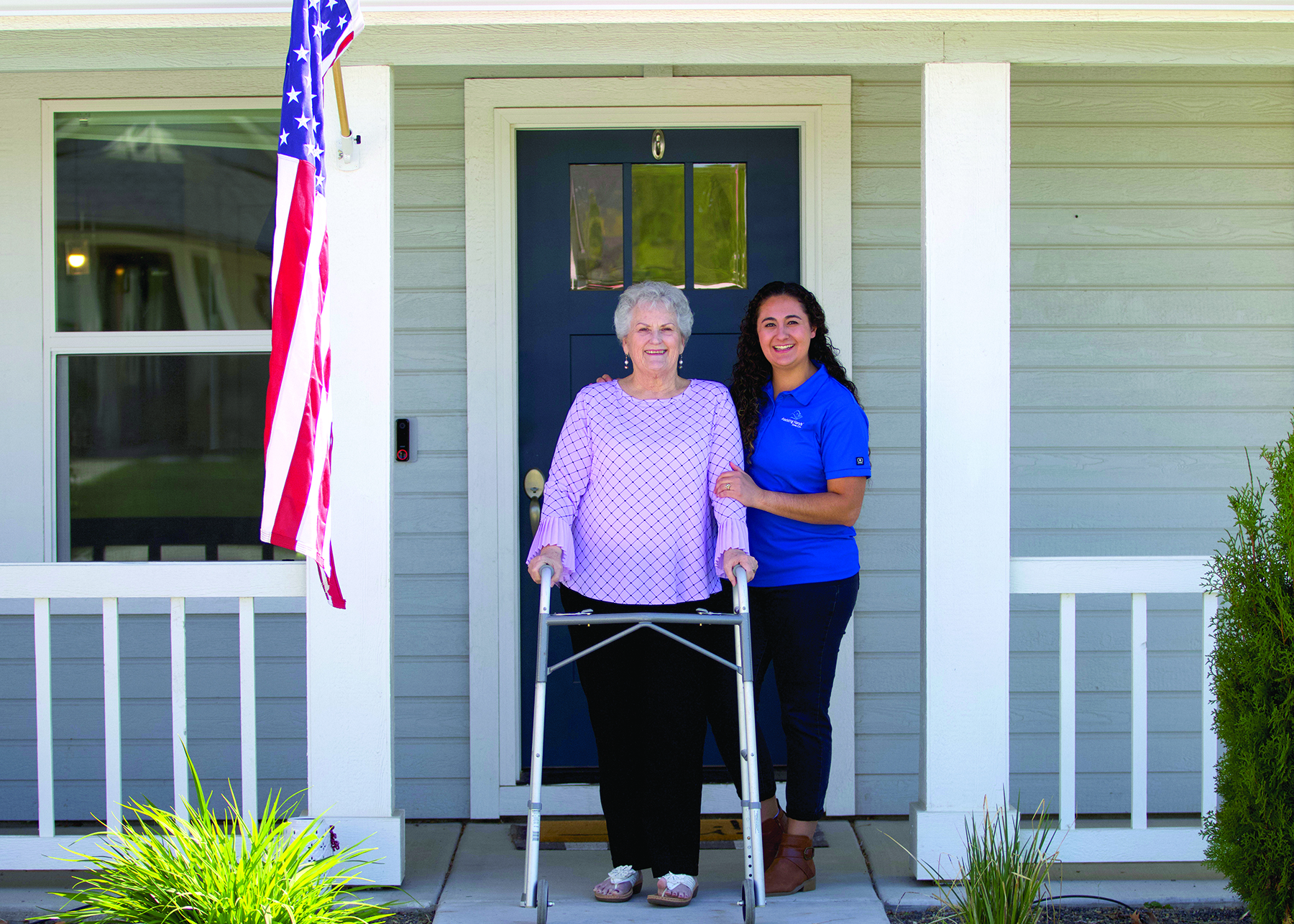

Falls are a common concern among elderly individuals, especially those residing in split-level homes. According to the Centers for Disease Control and Prevention (CDC), one in four older adults experiences a fall each year, making falls the leading cause of both fatal and nonfatal injuries in this age group. Furthermore, falls result in over 3 million emergency department visits annually, with direct medical costs exceeding $50 billion. Aside from the financial burden, falls can have severe consequences for older adults, including fractures, head injuries, and a loss of independence. With the aging population, the incidence of falls is expected to rise, emphasizing the urgent need for preventive measures and interventions to safeguard the health and well-being of older adults.
What are Split Level Homes?
Split-level homes are houses with different levels inside. They usually have three or more levels, separated by short flights of stairs. The main living areas, like the living room and kitchen, are on one level, while bedrooms and other rooms are on different levels. They became popular in the mid-20th century for their space-saving design and unique look.
Seniors may live in split-level homes for various reasons. Some may have chosen these homes earlier in life for their layout and design, enjoying the separation of living spaces and bedrooms. Others may have inherited or purchased split-level homes as they downsized or moved into more manageable accommodations in their later years.
However, it’s essential to remember that while split-level homes may have worked well for seniors when they were younger, adjustments may be necessary as they age to prevent falls.
What Causes Falls in the Elderly?

Falls in the elderly can result from a combination of factors, each playing a significant role in increasing the risk of accidents.
- Lack of Physical Activity: A sedentary lifestyle among older adults can lead to muscle weakness, reduced flexibility, and diminished balance, increasing the likelihood of falls. When seniors fail to engage in regular exercise, their muscles gradually weaken, flexibility decreases, and balance is affected, making them more vulnerable to falls. The reasons for the lack of physical activity among seniors include decreased motivation, physical limitations, chronic health conditions, fear of injury, limited access to exercise facilities, lack of social support, awareness about the importance of exercise, feelings of fatigue, environmental barriers, and time constraints.
- Chronic Health Illness: Certain chronic health conditions, such as Parkinson’s disease, osteoporosis, or diabetes, can affect mobility, balance, and muscle control, making individuals more susceptible to falls. Additionally, medications used to manage these conditions may have side effects like dizziness or drowsiness, further compromising stability and increasing fall risk.
- Diminished Vision: Poor vision is a common issue among the elderly, whether due to age-related conditions like cataracts or simply the need for updated prescription glasses. Reduced visual acuity makes it difficult to detect obstacles, changes in surface elevation, or hazards in the environment, increasing the likelihood of tripping or stumbling.
- Environmental Hazards: The home environment presents various hazards for elderly individuals, such as slippery floors, uneven surfaces, poor lighting, and cluttered walkways. Additionally, split-level homes, with their multiple levels connected by stairs, pose additional challenges for older adults, as navigating these stairs can be difficult and increase the risk of falls.
- Vitamin D Deficiency: Due to poor nutrition and a preference for staying indoors, many seniors have low levels of vitamin D, leading to muscle weakness, increasing the risk of falls and related injuries.
- Lower Body Pressure: Lower body pressure refers to discomfort or pain experienced in the lower part of the body, such as the legs, feet, or hips. This discomfort can affect the balance and mobility of the elderly, increasing their risk of falling.
Steps To Prevent Fall in the Elderly
Considering that one out of four seniors in the US experiences a fall each year, it’s essential to ensure that split-level homes are prepared to prevent falls. Given that aging adults spend a significant amount of time indoors, it becomes crucial to make the home fall-proof. Home modifications, ranging from simple to complex, are necessary to achieve this goal.
Install Handrails
The stairs are a major hazard for older people who must climb or descend them. Tightly fastened handrails on both sides of the stairs minimize fall risks. Families should install light switches at both the top and bottom of the stairs. Remove clutter along the stairs and hallways.
Add Stair Treads
Stair treads are the solution for slippery stairs. Several products are inexpensive to purchase and significantly increase safety. Indoor stair treads are available as carpet, rubber, and tape. These products add traction to each step, thereby reducing the chances of slips and falls.
Remove Rugs
Carpets and rugs add visual interest to a floor; but to seniors with poor vision, throw rugs are potential trip hazards. Firmly fix carpeting to the floor, ensuring loose ridges are not present. Consider removing all throw rugs and area rugs from the split-level home.
Install Grab Bars
Install grab bars in the bathroom, such as inside and outside the shower and next to the toilet. Seniors use these fixtures to stabilize themselves while walking on the slick bathroom floors. Falls are prevented when older adults grab onto the bars upon feeling dizzy or losing balance.
Add Non-Slip Strips
Families should place non-slip strips on bathroom floors. Any surface that gets wet can become slippery and dangerous. In addition, add non-skid mats to the inside of the shower floor for traction during a shower and immediately outside the bath for a firm grip upon exiting.
Increase Lighting
Ample lighting helps prevent falls in split level homes. Move the bed closer to the light switch in the bedroom. Plug in nightlights close to the bed. Place a flashlight near the senior’s nightstand in case the power goes out and she needs to leave the bedroom.
Choose light switch plates that glow in the dark, which can be seen at night. User-friendly pressure plate controls are easier for the elderly to use than traditional toggle switches. Alternately, install motion-sensor lighting that automatically turns on upon sensing movement.
Minimize Electrical Cords
Given the dependance on technology, electrical cords are likely to be strewn throughout the split-level home. Prevent a fall by keeping all cords out of hallways and walking areas. Reduce the need for extension cords by positioning furniture so that it creates a clear, straight path to walk through.
Adjust Shelving
Prevent falls in the kitchen by moving all heavily used items to a waist-high shelf. The aging adult will have little reason to climb a step stool and risk a fall and injury. Additionally, sliding shelves and lazy Susans can be installed in corner cabinets.
How Many Falls is Too Many for your Senior?
An elderly person is considered at high risk of falling if they have two or more falls in a year or if they get injured from a single fall. It’s important to recognize this risk so that preventive measures can be taken to keep them safe. Working with healthcare professionals and caregivers can help reduce the risk and severity of falls.
Assisting Hands for In-home Care Services For Seniors

Split-level homes, like any other architectural style, should accommodate the special needs of seniors. Families unsure of how to approach remodeling should consult an elder care expert, such as Assisting Hands Home Care. We provide a fall-risk assessment as part of our senior care services.
Our fall-risk assessment alerts families to safety risks in the senior’s home. As part of our fall prevention services, we continually monitor the home environment to ensure objects do not block walking areas. Caregivers remove clutter and adjust furniture to facilitate safe mobility.
Professional caregivers from our senior care agency have additional responsibilities. We support the daily nonmedical needs of seniors by shopping for groceries, preparing meals, performing light housekeeping, giving medication reminders, and assisting with personal hygiene tasks.
